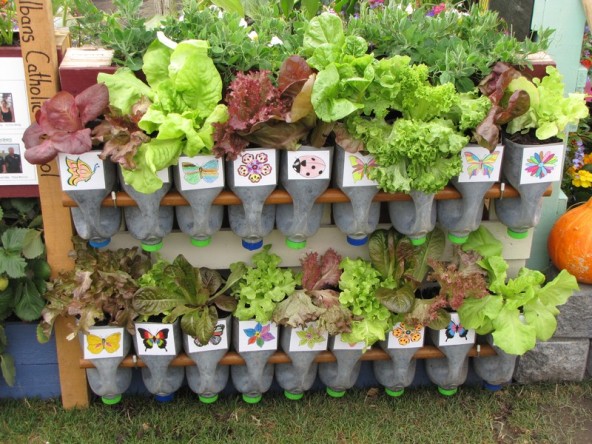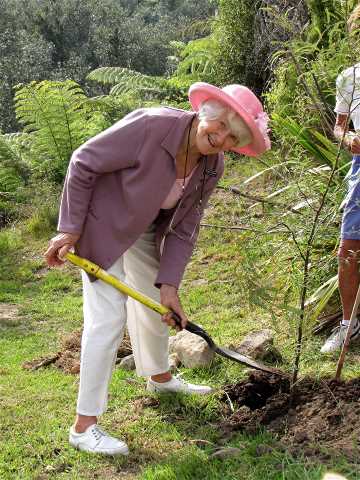When Anne and Al Gourley decided to have a vegetable garden, they realised they had no one to ask about how to grow veges.
“It was too late to get the knowledge from our parents, they had gone – and we realised a lot of our peers were in the same boat,” Anne says.
At about the same time, Al, a builder, spotted a bit of unused land in Otumoetai between the railway line and a council reserve and the idea for a Tauranga version of the English allotment system was born.
“Previously, it was just mown with overgrown plants by the railway line,” Al says. “There were people sleeping rough down here and the shed was always covered in graffiti.
“The council guy looked at me sideways when I walked in, but we’ve had pretty good support from them and from our neighbours.”

Al and Anne Gourley in the Otumoetai Community Garden. Photo: Sandra Simpson
The garden opened at the end of 2010 and has 58 plots, each raised bed measuring 4.5m by 1.5m (so a gardener can reach into the centre from the side). It is run by the non-profit Let’s Get Growing Trust, headed by Anne, who works as a hospice nurse.
Plot-holders pay $20 a month to cover water, a starter kit, workshops and to employ a part-time worker. In return, gardeners have the use of communal tools, a bed of compost and the chance to grow their own food.
“We researched pretty thoroughly and this size plot, if intensively managed, can feed a family of four,” Anne says. “Our gardeners range in age from 8 to 90 and some are passionate about passing on their skills and some are passionate about learning.”

A bee enjoys a leek flower. Photo: Sandra Simpson
Katikati-based Incredible Edibles donated fruit trees and bushes, which have been planted around the perimeter of the garden. Large signs invite passersby to help themselves to this produce but to leave the plots alone.
“So far that has worked pretty well,” Anne says. “We have a bit of pilfering but only enough to be irritating.”
One of the unexpected spin-offs has been the relationships that form between the gardeners.
“There is a real sense of belonging,” says Anne. “It’s very motivating to work alongside others – gardening is traditionally a solitary past-time but, when you do it in a community, it elevates the whole level of enjoyment. We’ve all made some firm friends here.”

A sunflower offers tasty seeds (if the birds don’t get them first). Photo: Sandra Simpson
The Let’s Get Growing trust helps foster the ties by holding monthly social occasions on site, as well as semi-regular working bees. Gardeners range from pensioners to children, from entire families to singles, and there are also plots rented by the police and worked by at-risk youth (mentored by members of nearby St Columba Church), and by the Stewart Foundation for those rehabilitating from head injuries.
The garden – which in 2011 won the group/community award in the Great New Zealand Grow-off – is managed as sustainably as possible and includes a system of compost heaps, a worm farm and a beehive.
- For more information contact Anne Gourley, phone 07 552 4529 or email. Each 4.5m by 1.5m raised bed costs $20 a month to rent (water rates, communal tools and a part-time worker) with a small amount of sponsorship available in cases of financial hardship. There is a waiting list for plots.
- There is to be an Open Day at the Otumoetai Community Gardens on Saturday, March 1, see the Events page for more details.
- To find a community garden in your area in the Tauranga-Western Bay see the Groups page.
This article originally comprised two pieces published in the Bay of Plenty Times. It appears here with permission.





















